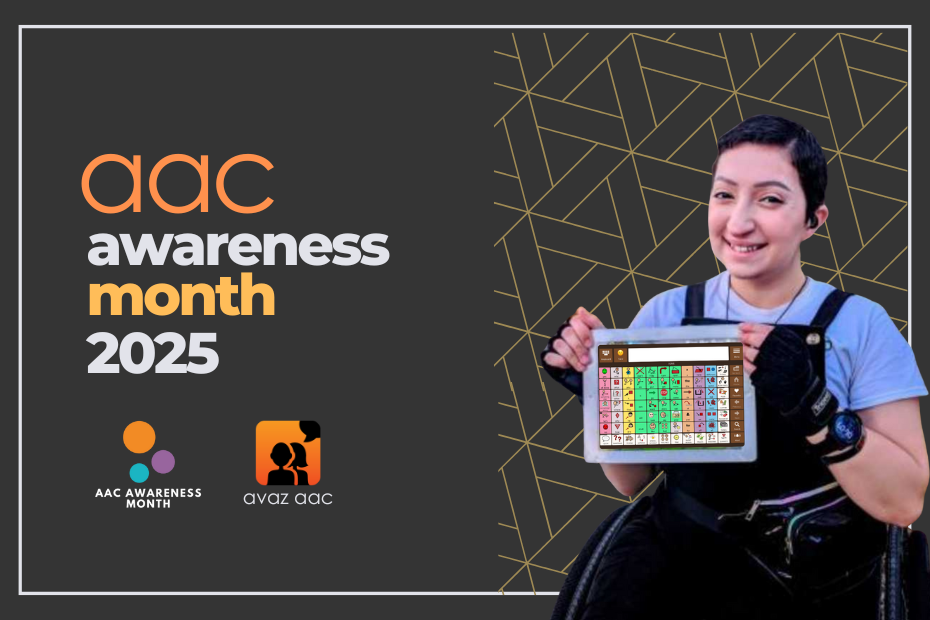In this blog, let’s explore how AAC can be used to initiate conversations, take turns, ask questions, and engage in appropriate social interactions.
Social Pragmatics, Communication & AAC
Building meaningful relationships and effective communication go hand in hand. An important part of this is understanding how to navigate social interactions successfully. The technical term for this is social pragmatics. Some also refer to this as social fluency.
For emergent communicators, embracing AAC tools and strategies can greatly improve their ability to engage socially. In this blog, let’s explore how AAC can be used to initiate conversations, take turns, ask questions, and engage in appropriate social interactions.
1. Initiating and Sustaining Conversations:
For AAC users, initiating and sustaining conversations can sometimes pose unique challenges. Here are some strategies for supporting this while using AAC:
Initiating
Build a Communication Vocabulary:
- Collaborate with the AAC user to create a set of core vocabulary, that includes common conversational phrases, greetings, questions, and comments.
- Use visual supports, such as a communication board or AAC app, to organize and display these vocabulary items for easy access.


Practice Conversation Starters:
- Add a communication board to the AAC device dedicated to conversation starters.
- Teach the AAC user how to use specific conversation starters, such as “Hi, my name is ……” or “What did you do over the weekend?” Role-play and practice these conversation starters in different scenarios.
As the AAC user becomes more proficient in initiating conversations, additional topics can be added to the board. This allows them to communicate about a wider range of topics and have more interesting conversations.
Sustaining
Use open-ended questions:
Encourage the AAC user to ask open-ended questions to keep the conversation going. These questions require more than a simple “yes” or “no” answer. For example, “What do you enjoy doing in your free time?”
Share personal experiences:
Provide the AAC user with phrases that allow them to share their own experiences, thoughts, and opinions during conversations. For example, questions such as “I recently tried <an activity/food>” or “I remember when we <personal experience>”. This helps create a reciprocal exchange of ideas while promoting social interaction.
2. Building Conversational Turn-Taking Skills:
Conversational turn-taking skills can be developed with AAC by incorporating the following:


Turn-Taking Messages:
Pre-saved messages on AAC devices:
Create messages like “Your turn,” “I’m listening,” or “May I speak?” that the AAC user can tap on to indicate their turn or prompt others to respond.
Practice Structured Turn-Taking Activities:
Engage in structured activities that require turn-takings, such as storytelling circles or question-and-answer sessions. Encourage the AAC user to actively participate by using their AAC device to contribute to the story, ask questions, or comment on story elements.
3. Understanding Social Context and Etiquette:
AAC users can benefit from visual supports, like social scripts or social stories, to understand and navigate social situations with appropriate etiquette. These supports provide guidance on social behaviors and help AAC users interpret social cues.
Social Scripts
Social scripts provide step-by-step instructions and visuals for specific social situations, helping AAC users understand and respond appropriately. They can use their AAC device to access pre-saved social scripts, which may include phrases, and sentences, for different social interactions.
Social Stories
Social stories are visual narratives that explain social expectations, rules, and appropriate behaviors in different contexts. These stories can be personalized to the AAC user’s specific needs, including relevant pictures or symbols to enhance understanding.
4. Reinforcement and Support:
When it comes to nurturing conversational skills and social etiquette for AAC users, it is crucial to embrace their uniqueness and individuality. It is important to individualize the teaching approach based on their needs, preferences, and communication abilities.
Remember, the journey of learning and enhancing communication skills for AAC users is ongoing. It requires patience, understanding, and a commitment to continuous growth.



